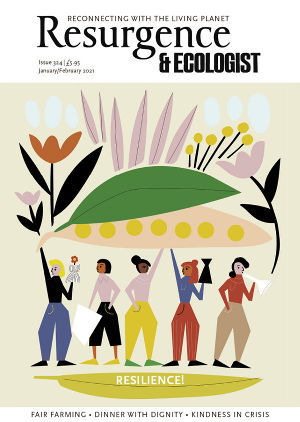I had to take two deep and protracted exhales after reading Valarie Kaur’s description of the Indian partition, including the words “the most violent forced migration”. Fourteen million people lost their ancestral homes and millions suffered acts of violence. This statement and this epic tome of a book felt deeply personal and painful. I cried many times under the weight of its revelations. As a Kashmiri myself, whose family was displaced by the violence inspired by the colonial ambitions and decisions of the “commonwealth”, I didn’t find this comfortable reading. All the while, Kaur’s book sketches out a banquet of discoveries of what is most beautiful in relationship, community and activism. This is a story of making bearable the heartache of our most horrific separations.
The Sikh ideal, sant-sipahi – the warrior-sage who uses violence only ever to protect the innocent – is at the heart of Kaur’s journey. Her grandfather implores her never to abandon her “post”, and to fight with wisdom as a way of being in the world. This is a fight to birth the right for life that is loved, battling not as part of a war but as part of peace. As you fight, you discover how to fight with a peaceful heart. There is no question here about if we fight, but instead endless curiosity about how we fight and how we fight together systemically, strategically and with discipline and fierce determination for ever greater peace.
During my work over the last two years with Extinction Rebellion, I have often described this as the mothering principle in action to protect and nourish what we love – a constant balancing of all the different needs that we can see and feel. Kaur also connects into the great metaphor of childbirth and the love hormone oxytocin. She makes a wondrous link about this mighty hormone that lowers our stress hormones, dampening our threat responses. She notes that when a mother feels that her children are threatened, oxytocin can actually increase aggression. So, for mothers, “rage is part of love.” This leads us to ask, how well can we rage? We are a society conditioned out of our ‘fight’ response. Kaur quotes Audre Lorde: “My fear of anger taught me nothing. Your fear of that anger will teach you nothing, also.” This suggests that anger carries vital information and life force to be heard and channelled. Kaur asks that we “breathe and push” through our challenges again and again. Labouring through the moments when we want to give up and when it feels too hard: that’s when we know we’re in transition. That’s when we know transformation is available.
Kaur’s proposition is this: “Joy is the gift of love. Grief is the price of love. Anger protects that which is loved. And when we think we have reached our limit, wonder is the act that returns us to love.” This is how we see no stranger. We commit ourselves to wonder by dedicating time to listen with wonder to those we know least. We listen with a heart of surrender and seek to become easier when we speak to one another about what we don’t know. We respect our anger and act upon its wellspring of wisdom for the protection of life we love. We mourn and grieve in solidarity – we actively feel one another’s losses and show up in physical presence for this as activism in action, and we nourish ourselves with what brings us joy in body, heart and soul. This is Kaur’s manifesto and prescription for creating a durable future. It illuminates what we need as individuals and in community to be in the fight for life. Thank you, Valerie Kaur, for deciphering and sharing what is needed with such bright and blazing rage, grief and love.






